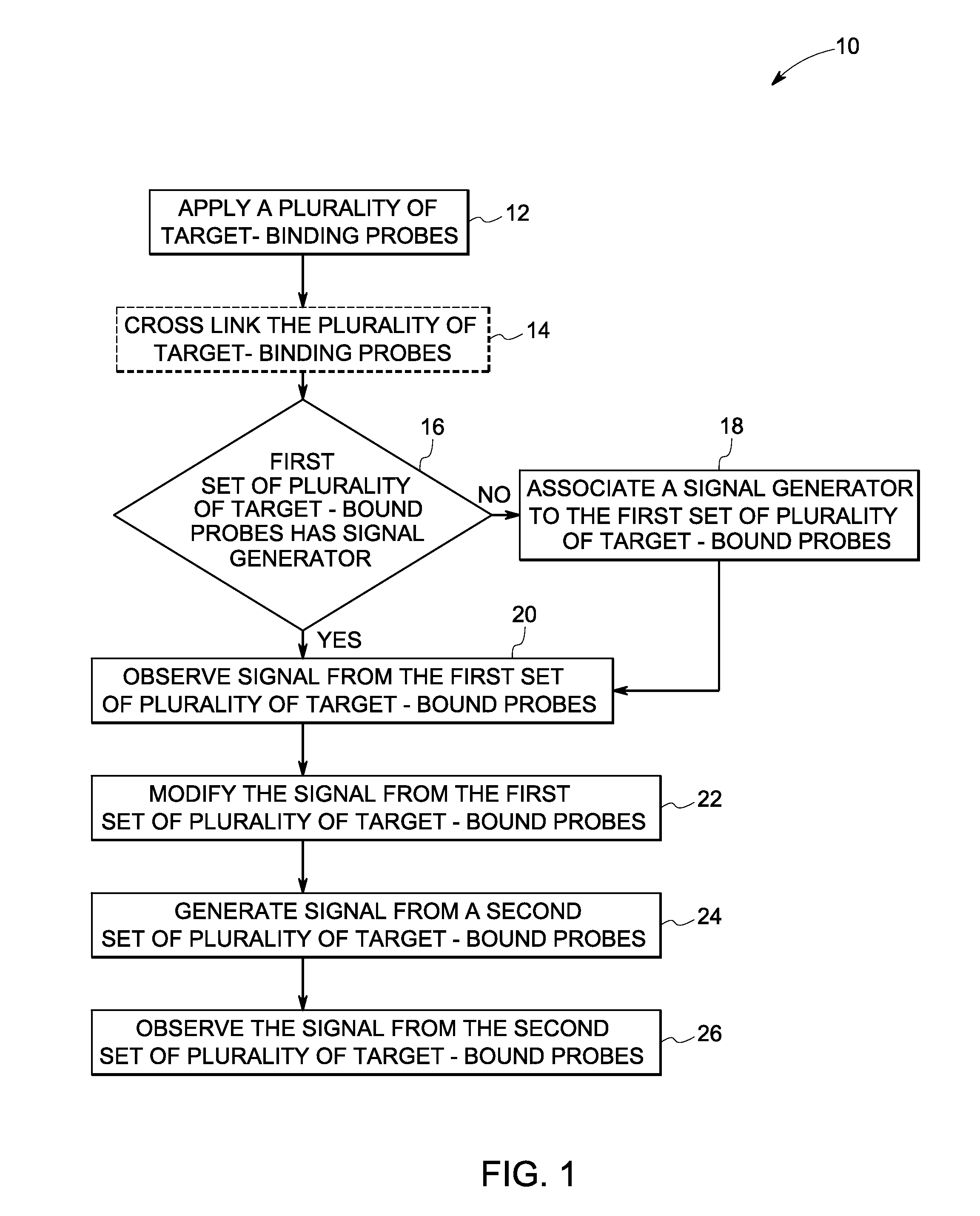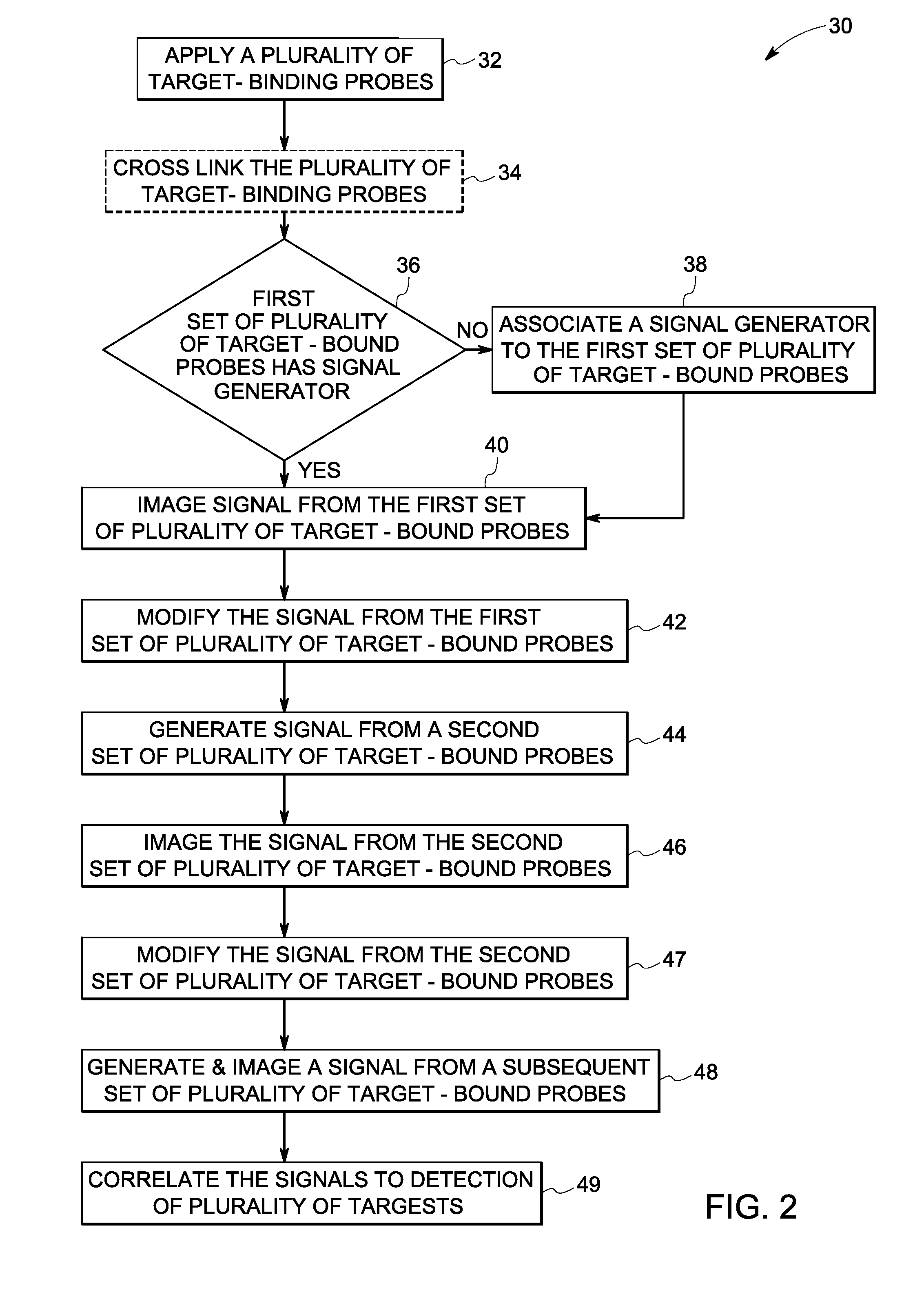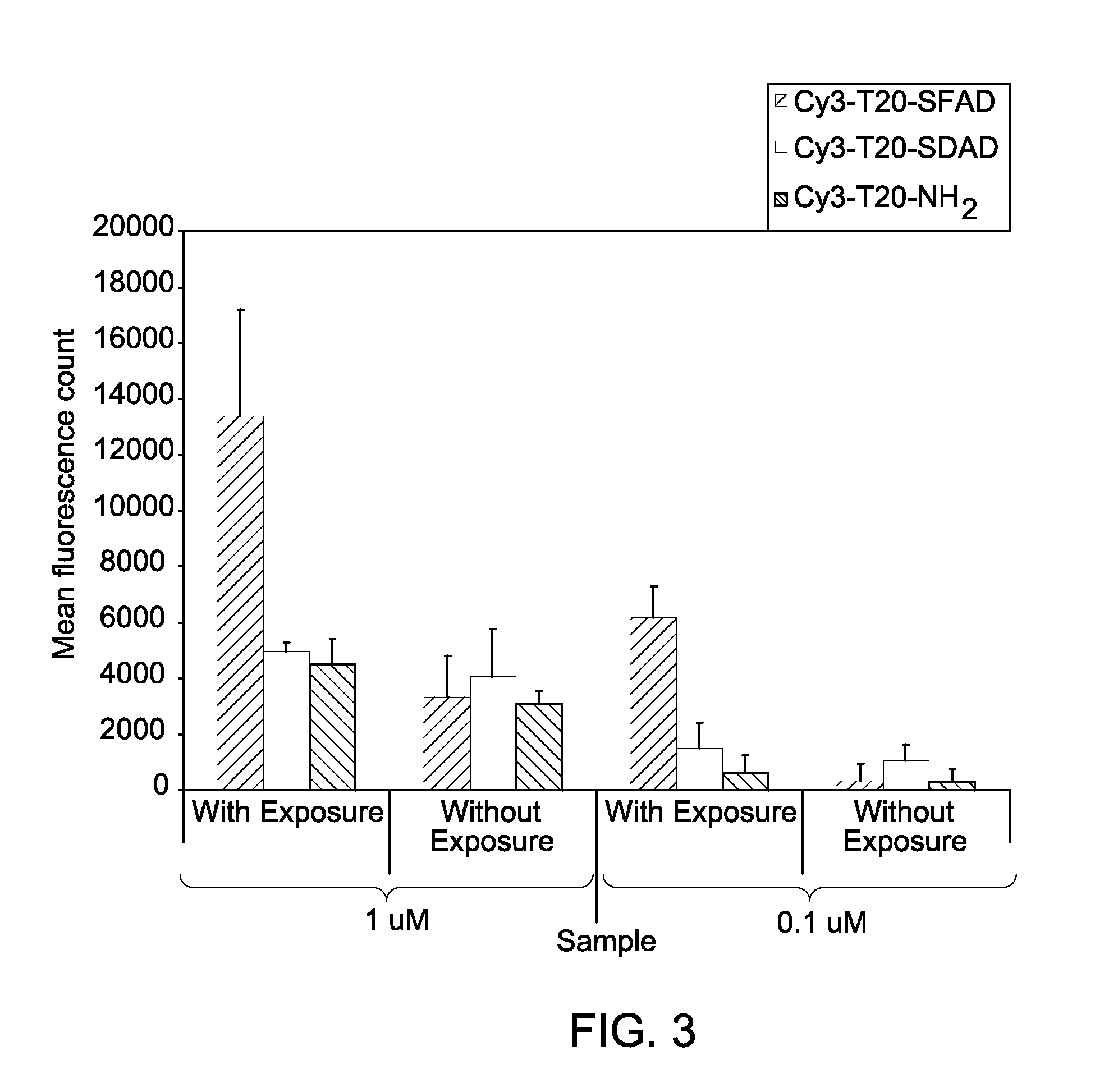Sequential analysis of biological samples
- Summary
- Abstract
- Description
- Claims
- Application Information
AI Technical Summary
Problems solved by technology
Method used
Image
Examples
example 1
[0093]The cross-linker modified, cyanine dye-labeled, DNA oligomer, Cy3-T20-SFAD was synthesized as follows. A 10 μL (31.9 nmoles) solution of Cy3-T20-NH2 (a thymidine oligomer comprising 20 thymidine units that is labeled with an amino modified linker at the 3′-end and labeled with a Cy3™ dye at the 5′-end, obtained commercially from Integrated DNA technologies, USA) in 10×PBS (Phosphate buffered saline) was diluted with 80 μL water and 10 μL of 1M NaHCO3 / Na2CO3 buffer (pH 8.4). To this, a 10 mM DMSO solution (20 equivalents) of sulfosuccinimidyl-[pentafluoroazidobenzamido]ethyl-1,3-dithiopropionate (Sulfo-SFAD, obtained commercially from ThermoFisher Scientific Inc., Ill., USA.) was added. The mixed solution was stirred at room temperature for about 1-2 hours. The crude mixture was purified on NAP-10 column (GE Healthcare, USA) using protocol provided by the column supplier.
[0094]Sulfo-SFAD is a heterobifunctional cross-linker that contains an amine reactive sulfo-N-hydroxysuccini...
example 2
[0095]The cross-linker modified, cyanine dye-labeled, DNA oligomer, Cy3-T20-SDAD was synthesized as follows. A 10 μL (31.9 nmol) solution of Cy3-T20-NH2 (a thymidine oligomer comprising 20 thymidine units that is labeled with an amino modified linker at the 3′-end and labeled with a Cy3™ dye at the 5′-end, obtained commercially from Integrated DNA technologies, USA) in 10×PBS (Phosphate buffered saline) was diluted with 80 μL water and 10 μL of 1 M NaHCO3 / Na2CO3 buffer (pH 8.4). To this, a 10 mM aqueous solution (20 equivalents) of sulfosuccinimidyl 2-([4,4′-azipentanamido]ethyl)-1,3′-dithiopropionate (Sulfo-SDAD, obtained commercially from ThermoFisher Scientific Inc., Ill., USA.) was added. The mixed solution was stirred at room temperature for 1-2 hours. The crude mixture was purified on NAP-10 column (GE Healthcare, USA) using protocol provided by the column supplier.
[0096]Sulfo-SDAD is a heterobifunctional cross-linker that contains an amine reactive sulfo-N-hydroxysuccinimide ...
example 3
[0097]The cross-linker modified, cyanine dye-labeled, DNA oligomer, Cy3-T20-SANPAH was synthesized as follows. A 10 μL (31.9 nmol) solution of Cy3-T20-NH2 (a thymidine oligomer comprising 20 thymidine units that is labeled with an amino modified linker at the 3′-end and labeled with a Cy3™ dye at the 5′-end, obtained commercially from Integrated DNA technologies, USA) in 10×PBS (Phosphate buffered saline) was diluted with 80 μL water and 10 μL of 1M NaHCO3 / Na2CO3 buffer (pH 8.4). To this, a 20 mM aqueous solution (50 equivalents) of N-sulfosuccinimidyl-6-(4′-azido-2′-nitrophenylamino) hexanoate (Sulfo-SANPAH, obtained commercially from ThermoFisher Scientific Inc., Ill., USA.) was added. The mixed solution was stirred at room temperature for 1-2 hours. The crude mixture was purified on NAP-10 column (GE Healthcare, USA) using protocol provided by the column supplier.
[0098]Sulfo-SANPAH is water soluble, heterobifunctional cross-linker with a spacer arm length of 18.2 Å. The Sulfo-SAN...
PUM
 Login to View More
Login to View More Abstract
Description
Claims
Application Information
 Login to View More
Login to View More - R&D
- Intellectual Property
- Life Sciences
- Materials
- Tech Scout
- Unparalleled Data Quality
- Higher Quality Content
- 60% Fewer Hallucinations
Browse by: Latest US Patents, China's latest patents, Technical Efficacy Thesaurus, Application Domain, Technology Topic, Popular Technical Reports.
© 2025 PatSnap. All rights reserved.Legal|Privacy policy|Modern Slavery Act Transparency Statement|Sitemap|About US| Contact US: help@patsnap.com



